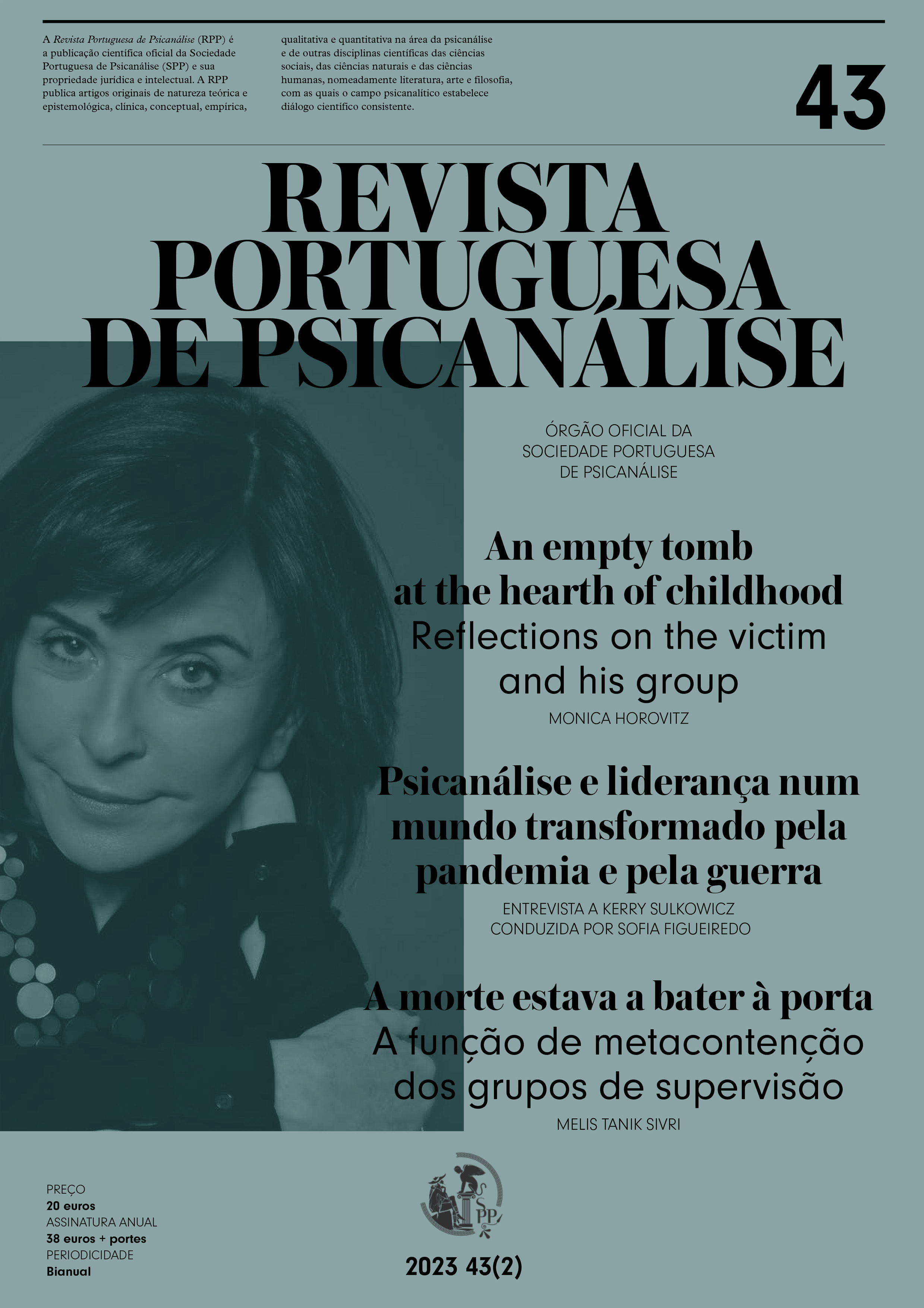Death was knocking on the door: The meta-containing function of supervision groups in working with victims of trauma

Abstract
Increasing violence and destruction in the world bring up new questions about theory and technique in the field of psychoanalysis. The purpose of this article is to discuss the importance of the meta-containing function of supervision groups while working with trauma victims. In order to illustrate this, examples will be given from a voluntary supervision group process which was established after a series of terrorist attacks in Turkey. Traumatic events, expressed in the outside world and witnessed during the sessions, may hinder the containing function of the therapist which may make it impossible to "think under fire" while "death is knocking on the door". By working through the conflicting feelings of the trauma victim, brought to the supervision group process through the mechanism of projective identification, a deeper understanding of the patient is achieved and the "blindspots" of the therapist are discovered. As the therapist-trauma victim dyad moves from "acting" to acquiring higher levels of symbolization, therapeutic process deepens, work of mourning is activated, and in some cases symptoms are eliminated and better adaptation to the outside world is observed.
Keywords
container-contained, meta-containing function, reverie, supervision, trauma
Author Biography
Melis Tanik Sivri
Psicanalista didata da Psike Istanbul e Membro europeu da Cowap. É também Editora-Chefe dos livros anuais do The International Journal of Psychoanalysis.
References
- Bergstein, A. (2013). Transcending the caesura. The International Journal of Psychoanalysis, 94, 621–644.
- Bion,W. (1957). On arrogance. The International Journal of Psychoanalysis, 39, 144–146.
- Bion,W. (1959). Attacks on linking. The International Journal of Psychoanalysis, 40, 308–315.
- Bion, W. (1961a). Experiences in Groups and Other Papers. Tavistock.
- Bion, W. (1962a). The psychoanalytic study of thinking. The International Journal of Psychoanalysis, 43, 306–310.
- Bion,W. (1962b) Learning from Experience. Karnac Books.
- Bion, W. (1967). A theory of thinking. In Second Thoughts (pp.178–186). Heinemann. (Original publicado em 1961).
- Bion, W. (1997). War Memoires 1917-1919. Karnac Books.
- Brown, L. (2012). Bion’s discovery of alpha
- function:Thinking under fire on the battlefield and in the consulting room. The International Journal of Psychoanalysis, 93, 1191–1214.
- Freud, S. (1920). Beyond the pleasure principle. Em The Standard Edition of the Complete PsychologicalWorks of Sigmund Freud, vol. 18 (pp. 3–64). Hogarth Press.
- Guignard, F. (2002). A stroll through the preconscious. Consultado em 17 de julho de 2023, em http://www.ercankesal.com/sevdigim-yazilar/bilinconcesinde-bir-gezinti/
- Joannidis, C. (2000). Sharing the unconscious phantasy:The therapist’s emotional reaction to the group as-a-whole. Group Analysis, 33 (2), pp. 209–220.
- Klein, M. (1940). Mourning and its relation to manic-depressive states. The International Journal of Psychoanalysis, 21, 125–153.
- Leuzinger-Bohleber, M., Rickmeyer, C., Tahiri, M., Hettich, N. & Fischmann,T. (2016).What can psychoanalysis contribute to the current refugee crisis? Preliminary reports from STEP-BY-STEP: A psychoanalytic pilot project for supporting refugees in a “first reception camp” and crisis interventions with traumatized refugees. The International Journal of Psychoanalysis, 97, 1077–1093.
- Roper, M. (2012). Beyond containing: World War I and the psychoanalytic theories of Wilfred Bion. Em S. Alexander & B.Taylor (Eds.), History and psyche – Culture, psychoanalysis, and the past (pp.129–147). Palgrave Macmillan.
- Souter, K. M. (2009). The War Memoirs: Some origins of the thought of W. R. Bion. The International Journal of Psychoanalysis, 90, 795–808.
- Segal, H. (1952). A psycho-analytical approach to aesthetics. The International Journal of Psychoanalysis, 33, 196–207.
- Szykierski, D. (2010). The traumatic roots of containment:The evolution of Bion’s metapsychology. The Psychoanalytic Quarterly, 79, 935–968.
- Winnicott, D. W. (1951). Transitional objects and transitional phenomena. A study of the first not-me possession. The International Journal of Psychoanalysis, 34, 89–97.
- Triest, J. (2016). Individual and Collective Dimensions of Trauma: When the (Unconscious) Nightmare Becomes Reality. Conferência proferida em Istambul. Novembro de 2016.